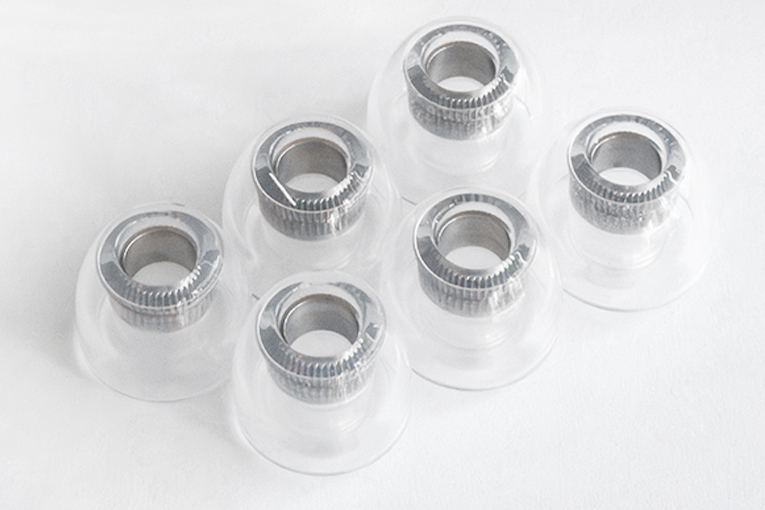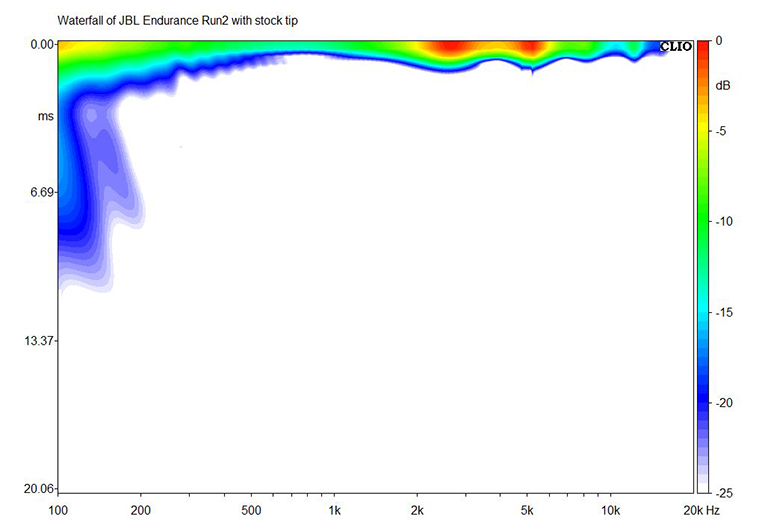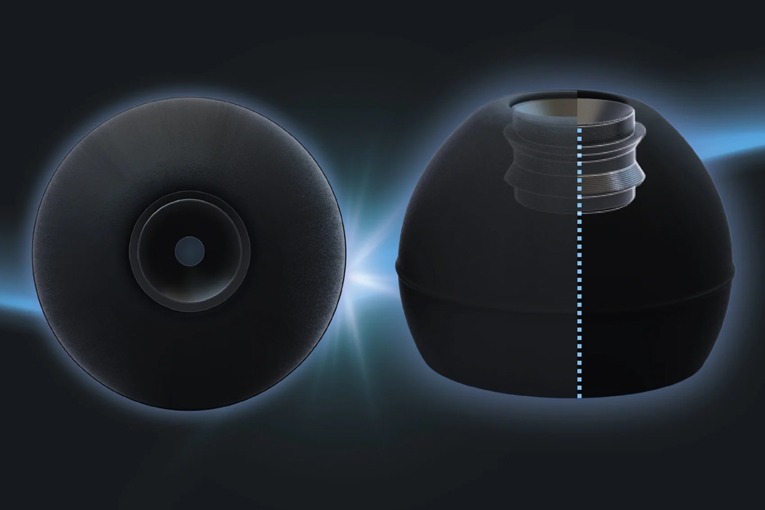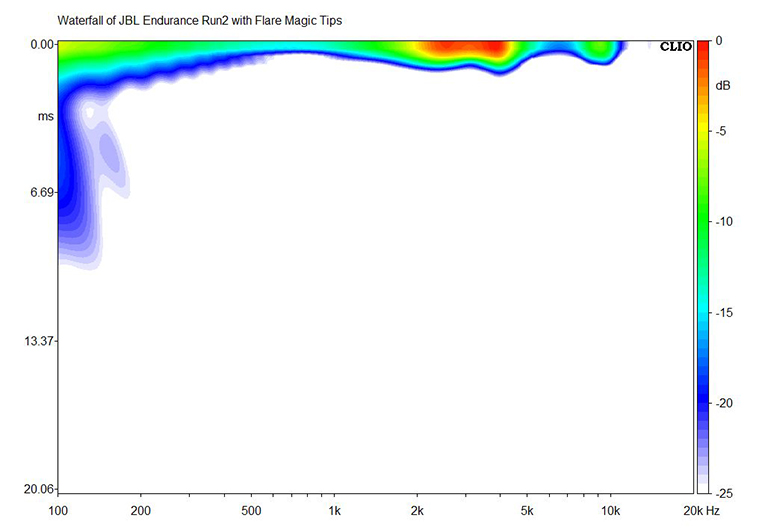Sound: 









Value: 









(Read about our ratings)
With a simple “Hey! Write about these!” email, my friend, former SoundStage! Solo editor, and current co-host of the Audio Unleashed podcast, Brent Butterworth, piqued my interest. The product in question? Flare Magic Tips aftermarket eartips, and later in the same conversation, the Azla SednaEarfit Mithryl eartips. The marketing for these products is exactly the kind of thing that gets Brent’s blood boiling, and he knew my annoyance would mirror his. Basically, these companies are saying you can improve the sound quality of your earphones just by replacing the stock silicone eartips with their expensive-in-comparison eartips.

Here’s how Flare describes its magical Magic Tips: “Unlock new clarity in your favorite earphones with Flare Magic Tips. Delivering uncompromised and immersive audio for comfortable all-day listening. Simply swap your regular tips for Magic Tips and press play.” The AZLA Mithryl eartips use “surgical stainless steel” cores surrounded by silicone. They claim “pure resonance unlocking” and “deep bass, clear highs, and a spacious soundstage.”
I paid US$39.56 for three pairs of Mithryl tips. That’s practically a bargain compared to the US$88.86 I paid for three pairs of Flare Magic Tips. The things I do for my craft.
The “magic” of sound
Before we dive into these . . . let’s say “creatively marketed” products, let’s speak briefly about eartips in general. Getting a good seal in your ear canal is crucial for the sound quality of any IEMs or earbuds. If they’re too loose, not only can they fall out, but you’ll typically get less bass. Too tight, and they might be uncomfortable to wear. An incorrect fit could even ruin the treble by preventing a path for the high frequencies to reach your tympanic membranes.
Most IEMs and earbuds come with three sizes of eartips, usually made of silicone but sometimes foam or occasionally other materials. Human ears vary a lot, though, and it’s quite common for people to have ear canals that are too big or too small for the three standard sizes. People might also be in between sizes, leading to less severe but similar problems as those mentioned above.
With that in mind, you can see how different eartips can absolutely affect the sound of earbuds. The wrong size, shape, or even different materials can change the sound significantly. So theoretically, aftermarket eartips—any aftermarket eartips, mind you—can change the sound of your earphones. Will they make the sound better? Will they change it enough to justify their price? Will they be “magic?” I spent $128.42 of my own money to find out what I already assumed.

And lest you think my bias against $30 eartips is unfair when I’ve bought entire earphones for less, Brent did me a favor and not only listened to these as well, but he even measured them—hence the need for three pairs of each type. Brent and I both used the JBL Endurance Run 2 wired earphones ($20), as they’re pretty close to the Harman Curve. I also used the Meze Audio Albas, which are the most neutral-sounding earphones I’ve tested recently, and I know them quite well.
Azla SednaEarfit Mithryl
The Azla SednaEarfit Mithryls are made in Korea, but the first block of characters below the name is in Japanese, hinting at their expected audience. The company also makes other types of eartips for other uses. The Mithryls have the aforementioned stainless-steel core, which is visible through the clear, gummy silicone. Where the tips secure onto the earbuds is silicone. The steel extends out from there. The fit felt secure in my ear.

The difference was subtle, but it was there. I went back and forth a few times, replacing both sides as well as putting the stock tip on one earbud and the Mithryl on the other, listening to each in turn (and then swapping). What I heard most was an increase in snare drum frequencies over the stock tips. It was enough to notice but not a radical change. A few taps on an EQ app would do the same or more. I liked the Albas a lot, and making them brighter was not an improvement. Maybe there was a slight difference in the size of the soundstage, but it was subtle enough that it could have been explained by slightly different placement in my ears. Such variations are unavoidable in testing like this.

The JBLs had more bass than the Albas, as well as a bit more output in those snare-drum frequencies. The Mithryls seemed to add more treble overall compared to the JBL earphones’ stock tips. Vocals sounded a little smoother with the stock tips. Again, it wasn’t a massive difference, but it was noticeable.

Brent felt that the Mithryls sounded fairly close to the stock tips, at least compared to the Flares. He thought the bass was better controlled and more natural with the Mithryls, but there was a little too much oomph in the 3–4kHz range that made them sound somewhat harsh in the vocals.
Flare Magic Tips
The Flare Magic Tips look and feel exactly like any other silicone eartip. The difference is in the interior design. As the name suggests, the center flares out like a megaphone from where it touches the earbud itself. So instead of a constant-diameter tube like most eartips, the Flare starts small and gets wider. I would have been surprised if they didn’t alter the sound. That’s just physics. Unlike the Mithryls, the Flares come with a little carrying case. For $30, they should come with fajitas and a dessert.

The Flares definitely gave the Albas more presence, which was especially noticeable in the snare-drum region. Acoustic guitars had a little less “sparkle” and air, however. It made the Albas sound different, but also more mundane. If the Flares were the stock tips for the Albas, we wouldn’t have given those earphones a Reviewers’ Choice award.
The Flares changed the balance of the JBLs. Again, not a huge amount, but going back and forth, it was noticeable. With the Flares, the treble was a little lumpier. Guitars sounded smoother with the stock tips, while percussion like hand claps and snare drums were a little louder with the Flares.

Brent thought the Flares made the JBLs sound brighter. He didn’t notice any more or less resonance—just brighter, so more apparent detail. He noted that it was getting away from the sound JBL’s engineers intended.
My concerns about the price aside, I will give Flare credit for turning their marketing prowess into selling earplugs, which is a laudable effort. Everyone should have hearing protection.
Conclusion
I don’t think you should buy expensive eartips. Will these eartips change the sound of your current earbuds? Could be, yeah. Will they make them “better”? That’s hard to say. Personally, I’ve never once thought, “You know what would make these earbuds better? More treble.” But that’s me. The difference will almost certainly be subtle enough that fiddling with an EQ will result in bigger changes. Those changes will also be more adjustable, reversible, and most importantly, free.
Really, though, these are a testament to the perils of audio marketing. Companies can largely say anything they want. Personally, I’m always skeptical of anything that claims to improve any fully designed product for a seemingly low (but extra) price. As if a big company somehow missed “one secret trick” that would actually make their product live up to its full potential. Somehow, all their engineers missed this one obvious thing, but some random other company figured it all out, and you can, too—you just need to give them money. Could that be possible? Has it happened? Sure, but like I said, skepticism is my default attitude toward this stuff, and I hope it’s yours as well.
As far as the Mithryl and Flare tips go, I’ll say this: the Mithryls feel great in your ears and look like a premium add-on. They also make tips with that same silicone minus the steel inserts, and I imagine those are fine if the smooth texture is what you’re looking for. The Flares are really pricey for what is literally just a silicone eartip that changes the sound of your earphones. I don’t think they, nor the Mithryls, improved the sound, but they did change it. Perhaps to your ears that change will be for the better, but if you like the sound of your earphones, I wouldn’t count on it.
. . . Geoffrey Morrison
Associated Equipment
- Earphones: JBL Endurance Run 2, Meze Audio Alba
- PC: iBuyPower Windows 11
- DAC/headphone amplifier: Schiit Audio Magni
Azla SednaEarfit Mithryl
Price: US$33 (three pairs)
Warranty: None, though replacements are possible in some situations
AZLA Inc.
332, Hyoryeong-ro, 3F, Jikyeong Building
Seocho-gu, Seoul
06721
South Korea
Email:
Website: store.azla.co.kr
Flare Magic Tips
Price: US$29.95, CA$39.95, £19.95, €25.95
Warranty: None
Flare Audio
42 Chartwell Road
Lancing
BN15 8FB42
United Kingdom
Email:
Website: www.flareaudio.com





